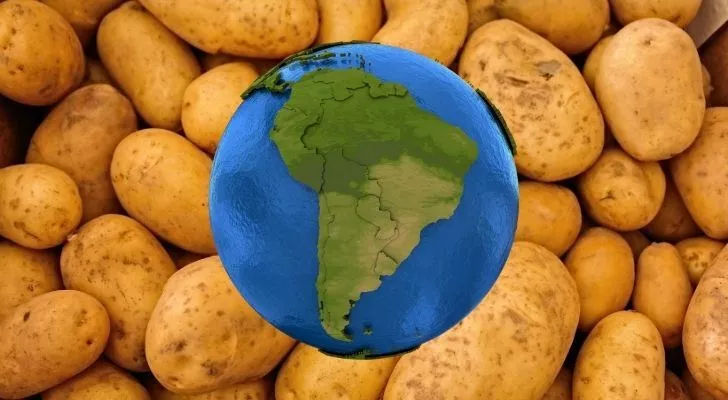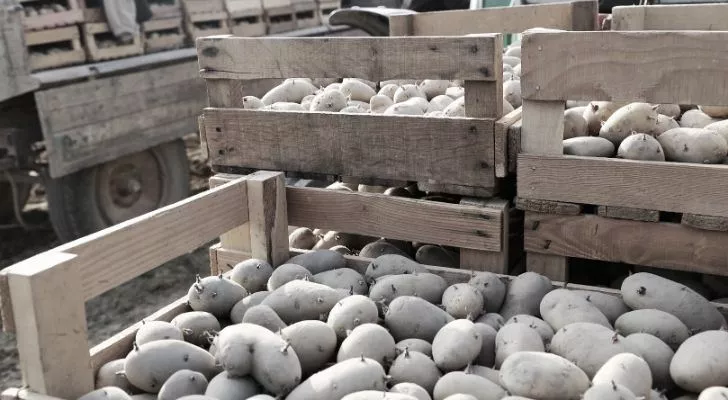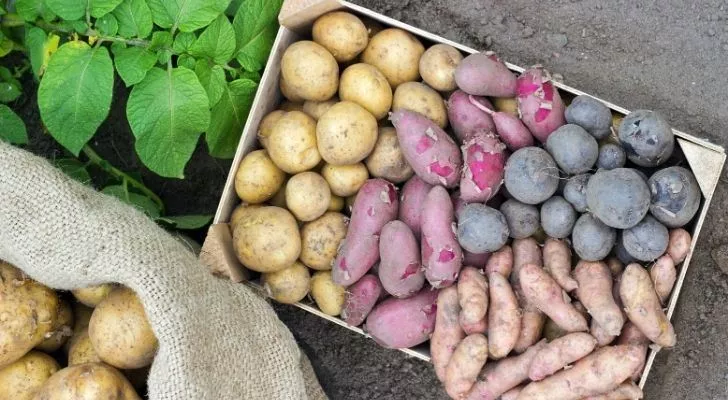Did you know that potatoes were the first vegetable to be grown in space in 1995?
Potatoes have played a significant role in the rise and fall of empires.
We’re not talking about emperors, but the humble potato!
This crop helped empires grow to unprecedented sizes thanks to its reliability.
On the other hand, Ireland was devastated by famine when a fungus destroyed their potato crops.
As you can see, potatoes are more than just a starchy tuber!
Let’s explore these ten interesting facts about potatoes.
Potatoes originate from South America.

Despite many people believing that Ireland is the source of this versatile vegetable, the potato was domesticated from a wild plant in the northwestern region of Bolivia and the southern part of Peru.
It was unknown to the rest of the world until Spain conquered the Americas in the 1600s.
The Spanish conquistadors brought it back to Europe, where it was initially viewed with suspicion.
People have been growing potatoes for at least 7,000 years.

The potato was domesticated in parts of Bolivia and Peru, and while we know this happened between 8,000 to 5,000 BC, the first archaeological evidence comes from Ancon, a major pre-Hispanic archaeological site in Peru that dates back to 2,500 BC.
The remains of a potato tuber from some 4,500 years ago were discovered among other important artifacts.
There are approximately 4,000 different types of potatoes.

Non-commercial varieties are also included in this list, which consists of potatoes grown in South America, similar to those brought to Europe in the 1600s, and those developed in the 400 or so years since then.
Although there are thousands of different types of potatoes, only a handful are commonly found in a particular region.
In the UK, for example, there are only around 80 types of potatoes that are more commonly available on a larger commercial scale.
Different types of potatoes are suited for different dishes.

Those who say that not all potatoes are equal don’t understand how to use them correctly.
Each variety of potatoes has a different starch content, among other things.
Potatoes with higher starch levels, such as the Russet, are more floury and suitable for frying, baking, and making hash browns.
Potatoes with lower starch levels have a waxy texture, making them ideal for whole salads and stews. The fingerling variety is a commonly available waxy potato.
The Yukon Gold potato is versatile and can be used for boiling, roasting, frying, and mashing. Surprisingly, potatoes belong to the same family as tobacco and deadly nightshade. The Solanaceae family also includes tomatoes and eggplants. If a potato has turned green due to too much sun exposure, it means it has produced solanine, a neurotoxin that can make humans sick. However, small green spots can be cut or peeled away. Potatoes can be stored for up to a year in commercial warehouses at a chilly 39 °F (4 °C). The Incas used potatoes for physical ailments, while sweet potatoes are not related to regular potatoes.
Both potatoes and sweet potatoes are starchy root vegetables, but they are not related. Potatoes are tubers, while sweet potatoes are enlarged roots of the sweet potato plant. Sweet potatoes belong to the Convolvulaceae family, which is the same family as morning glory.
In 1995, the University of Wisconsin collaborated with NASA to grow potatoes in space. Half of the potato plant clippings were sent to space, while the other half remained on earth as a control. The results showed no noticeable differences between the space-grown and earth-grown potatoes. Potatoes are a versatile food that can be boiled, mashed, or cooked in stews. Millions of people worldwide have a shared love for this humble little tuber.
FAQ
1. What are some fun facts about potatoes?
Potatoes have been cultivated for over 4,000 years and are the fourth most consumed food crop in the world. They are also the world’s largest vegetable crop and can be found in a variety of colors, including purple, red, yellow, and white. Additionally, potatoes are a great source of vitamin C and potassium.
2. How did potatoes become so popular?
Potatoes were first introduced to Europe in the late 1500s and quickly became popular due to their ability to grow in a variety of climates and soil types. They were also easy to store and transport, making them a valuable food source for sailors and soldiers.
3. Where are potatoes grown?
Potatoes are grown all over the world, but the top potato-producing countries include China, India, Russia, and the United States.
4. What are some different ways to cook potatoes?
Potatoes can be cooked in a variety of ways, including boiling, frying, baking, and roasting. They can also be mashed, scalloped, or made into potato chips and french fries.
5. What are some health benefits of eating potatoes?
Potatoes are a great source of complex carbohydrates, which provide the body with energy. They are also high in fiber, which helps to keep the digestive system healthy. Additionally, potatoes are low in fat and calories, making them a great food option for those trying to maintain a healthy weight.
6. Can potatoes be bad for you?
Eating too many potatoes, especially if they are fried or loaded with butter and sour cream, can lead to weight gain and other health issues. It is important to eat potatoes in moderation and to choose healthy cooking methods, such as baking or boiling, instead of frying.
7. What are some common potato varieties?
There are hundreds of potato varieties, but some of the most common include Russet, Yukon Gold, Red Bliss, and Fingerling potatoes.
8. Are there any interesting uses for potatoes?
Aside from being a popular food source, potatoes have a variety of other uses. They can be used to power clocks and light bulbs, as well as to make glue and paper. In addition, potato juice has been used as a natural remedy for burns and other skin irritations.

Zayn Anderson is a prolific writer with a passion for uncovering the world’s intriguing facts. Armed with an insatiable curiosity, he delves into various subjects, from history and science to nature and technology.
